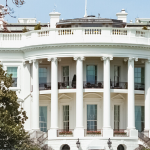Letter to Senate HELP Committee Leadership on Provider-Type Equity
The Honorable Patty Murray
Chair, United States Senate Committee on Health, Education, Labor and Pensions
The Honorable Richard Burr
Ranking Member
United States Senate Committee on Health, Education, Labor and Pensions
Dear Chairwoman Murray and Ranking Member Burr:
The American Ambulance Association (AAA) appreciates the opportunity to provide suggestions for bipartisan legislation to improve medical preparedness and response programs. The AAA is the primary association for ground ambulance service suppliers/providers, including governmental entities, volunteer services, private for-profit, private not-for-profit, and hospital-based ambulance services. Our members provide emergency and non-emergency medical transportation services to more than 75 percent of the U.S. population. AAA members serve patients in all 50 states and provide services in urban, rural, and super-rural areas. As the National Highway Transportation Safety Administration identified in its 2013 report on emergency services, EMS-only systems – such as our members – provide the vast majority of emergency ambulance services throughout America.
Our members are often the first health care teams to encounter patients who are sick and/or suspect they might have COVID-19. In addition to responding to 911 emergencies and transporting patients to appropriate destinations, they are also being asked to provide health care services within their existing State-defined scope of practice without transporting patients to help reduce hospital surge, as well as to protect high-risk patients from potential exposure to COVID-19. State and Local governments and public health authorities are also enlisting ground ambulance organizations to assist with testing suspected COVID-19 patients. In addition, ground ambulances provide important medical transitional care for patients moving between facilities in both emergency and non-emergency situations.
During this pandemic, our members have experienced first-hand the gaps in the public health infrastructure and the medical preparedness and response systems and programs. One of the most frustrating aspects of the current system has been the lack of recognition and support for communities that contract with non-governmental ground ambulance providers/suppliers in everything from federal grant programs to the distribution of personal protective equipment for EMTs and paramedics.
Many of the federal grant programs triggered during the pandemic have fallen short of their promise because the statutes and regulations governing them do not recognize non-governmental ground ambulance providers/suppliers as eligible entities. This distinction remains confusing because in other areas of health care, federal grant programs are accessible by private, for-profit health care providers and suppliers.
Outdated statutes and regulations often assume that first responders are governmental or not-for-profit entities and ignore the decisions of State and Local governments to contract with private ground ambulance providers/suppliers to provide 911 or equivalent services. As others have recognized, “State and Local officials know what works best in their communities – what works best in New York City may be much different than what works in rural Tennessee.”1 The federal government should respect these local decisions and support all first responders.
An example of this problem arose early during the COVID-19 pandemic. The FEMA public assistance grant program reimburses first responders for PPE and other expenses related to the response to COVID-19. When public and private non-profit emergency ambulance providers/suppliers sought direct reimbursement under the program, they were turned away. Private emergency ambulance providers/suppliers were required to have a State or Local government agency apply on their behalf. As State and Local governments responded to the public health emergency, it was understandably difficult for them to allocate resources to work through the application process on behalf of their contractors.
This differential treatment impacts communities across the United States, including those in Arkansas, California, Colorado, Florida, Georgia, Indiana, Louisiana, Massachusetts, Mississippi, Nevada, New York, Oregon, Texas, and Wisconsin, among others.
In contrast to statutes like the one government FEMA allocations, the Homeland Security Act of 2002 (6 U.S.C. § 101) includes language that recognizes the decision of State and Local governments to contract with private not-for-profit and for-profit ground ambulance providers/suppliers within the definition of “emergency response providers.”
The AAA urges the Congress to adopt the Homeland Security Act definition of “emergency response providers” throughout the U.S. Code as applicable. Such language will help to make sure that when funding is available to help State and Local governments prepare and respond, the allocation mechanisms governing the funding permit all types of first responders, including non-governmental ground ambulance providers/suppliers, to access the dollars quickly and with minimal burden.
Recommendation
The Committee should carefully review federal public health programs and revise them as necessary to ensure that the funds may be used to support both non-governmental and governmental ground ambulance providers/suppliers to ensure that all communities, regardless of their individual decisions related to the entities operating their EMS systems, have federal funds to support their response efforts during public health emergencies.
On behalf of the AAA, I want to thank you for your ongoing support of EMS and ground ambulance providers/suppliers, as well as the leadership demonstrated by your work to prepare for the next pandemic. Over the years, the Congress has consistently recognized the vital and unique role that ground ambulance providers/suppliers play in protecting their communities and providing mobile health care services. In light of the lessons learned during this pandemic, we encourage you and your colleagues to revise antiquated language that no longer represents the innovations and progress that have led to State and Local governments to rely upon ground ambulance providers/suppliers, including non-governmental organizations.
The AAA and its volunteer leaders would welcome the chance to discuss this recommendation. We would also be pleased to participate in any fact-finding discussion or hearing that the Congress plans to host to better understand how the problems experienced during the current pandemic can be avoided in the future. Please do not hesitate to reach out to Tristan North at (202) 486-4888 or tnorth@ambulance.org, or Kathy Lester at (202) 534-1773 or klester@lesterhealthlaw.com to schedule a time for further discussion.
Sincerely,
Shawn Baird
President, American Ambulance Association
Vice President of Rural Services, Metro West Ambulance
1The Honorable Lamar Alexander, “Preparing for the Next Pandemic” White Paper” 4 (June 9, 2020).













